Last updated on
Learn the simple yet effective techniques to fluff your couch cushions, ensuring their comfort and longevity for a cozy and inviting living space.
Have you ever sat on your couch and noticed that the cushions feel flat and lifeless? It’s not uncommon for couch cushions to lose their shape over time, especially if they are frequently used. But don’t worry, there’s an easy solution! Fluffing your couch cushions can make a huge difference in the appearance and comfort of your furniture.
In this article, we’ll show you how to fluff your couch cushions like a pro, so you can enjoy a cozy and inviting living space once again. So grab some pillows and let’s get started!
Key takeaways:
- Identify Cushion Types: Foam, down-filled, synthetic fiber-filled.
- Remove Cushions From Couch: Note position, detach if necessary.
- Unzip and Check Fillings: Smooth clumps, add more if needed.
- Hand Fluffing Technique: Shake, knead, punch, smooth.
- Use of a Cushion Fluffer: Pump it up for quick fluffing.
Table of Contents
Identify Cushion Types
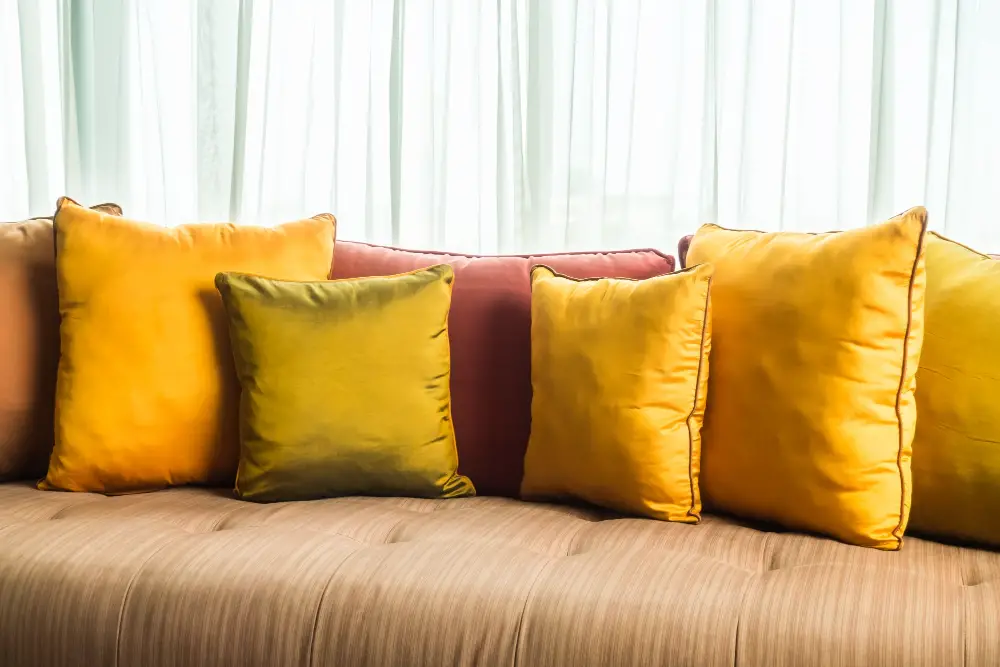
Before you start fluffing your couch cushions, it’s important to identify the type of cushion you’re working with. This will help determine the best method for fluffing and maintaining them.
There are several types of couch cushions, including foam, down-filled, and synthetic fiber-filled.
Foam cushions are made from high-density foam that provides firm support but can lose its shape over time. Down-filled cushions offer a soft and luxurious feel but require frequent fluffing to maintain their shape.
Synthetic fiber-filled cushions provide a balance between comfort and durability.
To identify your cushion type, check the label or ask the manufacturer for information on what materials were used in its construction.
Remove Cushions From Couch

This will give you better access to the cushion fillings and make it easier for you to fluff them properly. Before removing the cushions, take note of their position on the couch so that you can put them back in their correct place later.
To remove a cushion, simply lift it up and out of its slot on the couch frame. If your cushions are attached with Velcro or snaps, carefully detach each one before lifting it off.
Be sure to handle each cushion gently as they may be heavier than expected.
Once all of your cushions have been removed from the couch, set them aside in a safe location where they won’t get dirty or damaged during cleaning or maintenance procedures.
Unzip and Check Fillings
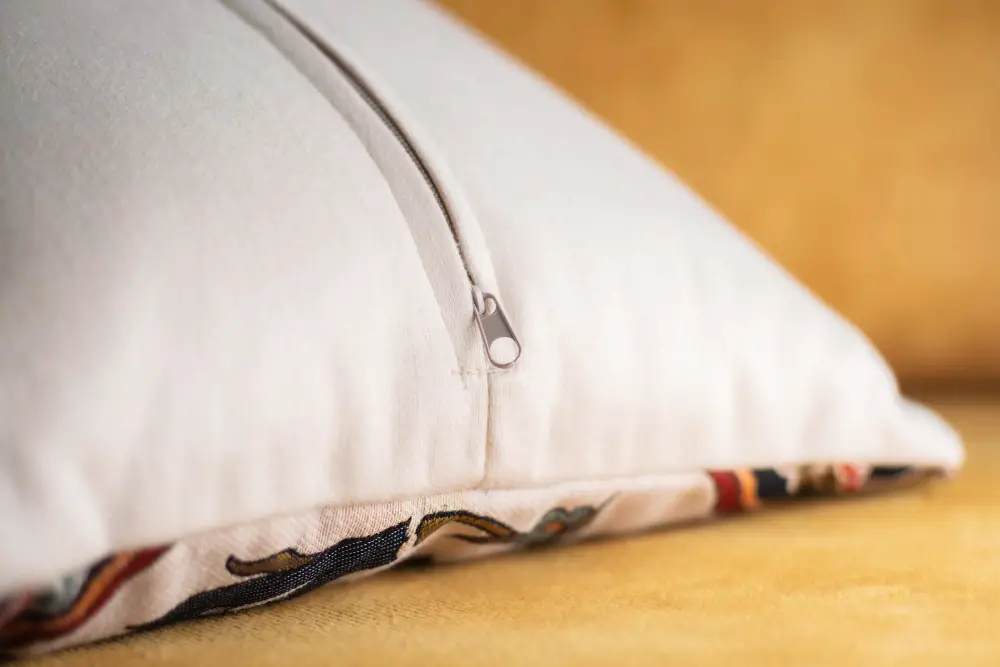
This step is crucial in determining whether or not your cushions need more filling or if they require a complete replacement.
Start by unzipping one side of the cushion cover and carefully remove the foam insert. If you notice that there are lumps or unevenness in the filling, use your hands to smooth out any clumps and redistribute it evenly throughout the cushion.
If you find that there isn’t enough filling inside, consider adding more stuffing material such as polyester fiberfill until it reaches its desired level of firmness.
On occasion, some couches may contain feather-filled inserts which can be fluffed up by hand for added comfortability. However, keep an eye out for feathers poking through fabric seams as this could cause discomfort when sitting on them.
Hand Fluffing Technique
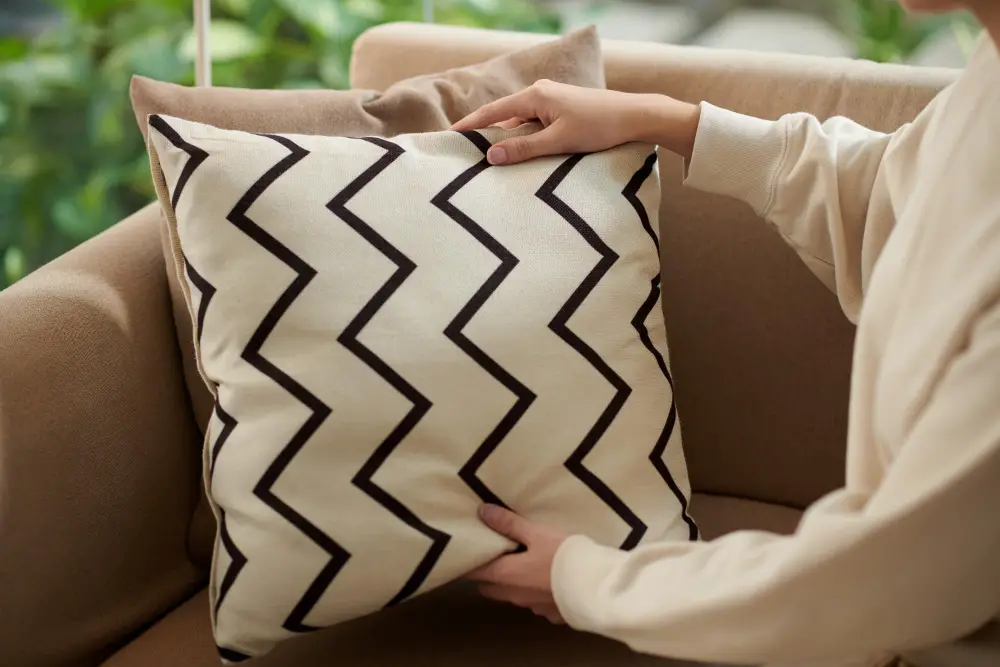
To begin, remove the cushion from your couch and give it a good shake to loosen any clumps or lumps in the filling. Then, use both hands to gently knead and squeeze the cushion all over, starting at one end and working your way towards the other.
This will help redistribute any displaced filling evenly throughout the cushion.
Next, hold each corner of the cushion with one hand while using your other hand to punch down on its center repeatedly. This motion helps break up any remaining clumps in between fibers that may have formed during usage.
Smooth out any wrinkles or creases by running both hands over each side of the pillow until it looks plump again.
Use of a Cushion Fluffer

This tool is specifically designed to restore the shape and volume of your cushions, making them look and feel like new again.
To use a cushion fluffer, simply place it in the center of the cushion and pump it up and down several times. The pumping motion will create air pockets within the filling, which will help expand it back into its original shape.
Cushion fluffers are available in different sizes depending on your needs. They can be found at most home decor stores or online retailers.
Using a cushion fluffer can save you time compared to hand-fluffing each individual pillow. It’s also an excellent option for those with limited mobility or strength who may find manual methods challenging.
Utilizing a Dryer

This method is especially useful if you have down or feather-filled cushions that tend to clump together over time.
To start, remove the cushion covers and place them in the dryer on low heat with a couple of clean tennis balls or dryer balls. The tennis balls will help break up any clumps in the filling while also adding some extra fluffiness.
Let them tumble dry for about 15-20 minutes before checking on them. If they still feel flat, give them another 10-15 minutes until they reach your desired level of fluffiness.
Once done, take out each cushion cover from the dryer and shake it gently before putting it back onto its respective cushion insert. You’ll notice an immediate difference in how plump and comfortable your couch feels!
Cushion Cleaning Tips

Over time, dirt, dust, and other debris can accumulate on the surface of your cushions. This not only affects their appearance but also makes them less comfortable to sit on.
To clean your couch cushions effectively, start by removing any loose debris with a vacuum cleaner or brush attachment. Then use a mild detergent solution to spot-clean any stains or spills that may have occurred.
It’s important to avoid using harsh chemicals or abrasive cleaners as they can damage the fabric and fillings of your cushion. Always check the care label for specific cleaning instructions before attempting to clean it yourself.
If you’re unsure about how best to clean your couch cushions safely and effectively, consider hiring a professional upholstery cleaning service instead.
Proper Cushion Maintenance

One of the most important things you can do is to regularly fluff them up, as we discussed earlier. However, there are other steps you can take to keep your cushions in good condition.
Firstly, it’s a good idea to rotate and flip your cushions every few months. This will help distribute the wear and tear evenly across all sides of the cushion.
Secondly, make sure that you’re not exposing your couch or its cushions to direct sunlight for extended periods of time. Sunlight can cause fading and damage over time.
Lastly, be mindful when eating or drinking on or near your couch – spills happen! If something does spill on a cushion (or anywhere else), clean it up immediately with a damp cloth before it has a chance to set in.
The Role of Cushion Covers
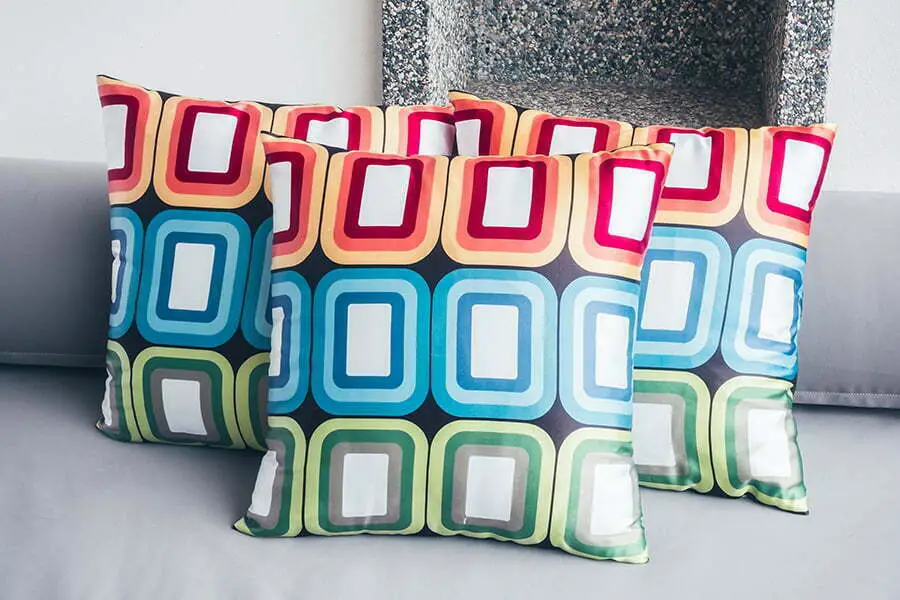
They protect the cushion fillings from dust, dirt, spills, and stains that can cause damage over time. Regularly washing or changing your cushion covers is an easy way to keep them looking fresh and new.
When choosing cushion covers, opt for materials that are durable yet comfortable to touch such as cotton or linen blends. These fabrics are breathable which allows air circulation preventing moisture buildup inside the cushions.
It’s also important to choose colors that complement your living space while considering factors like lighting conditions and other furniture pieces in the room.
Flip and Rotate Cushions
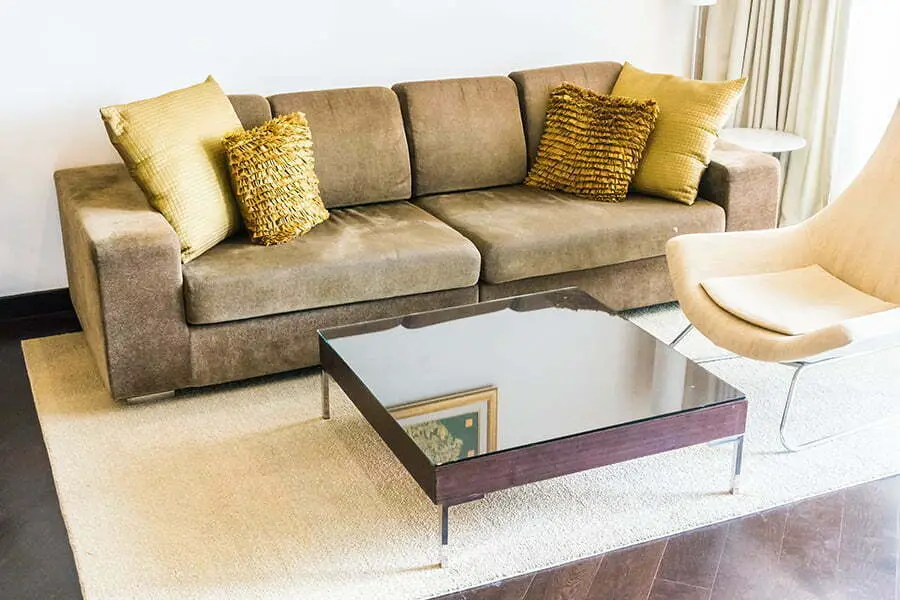
This technique helps distribute the wear and tear of the cushions evenly, preventing them from losing their shape too quickly.
To flip your cushions, simply turn them over so that the bottom becomes the top. If you have reversible cushions with two different patterns or colors, this can also give your living space a fresh new look.
Rotating your cushions involves moving each cushion to a different position on the couch. For example, if you have three seat cushions on your couch labeled A,B,C from left to right when sitting down; rotate A to C’s position while B goes where A was originally placed and C moves into B’s spot.
Re-arrange Cushion Position
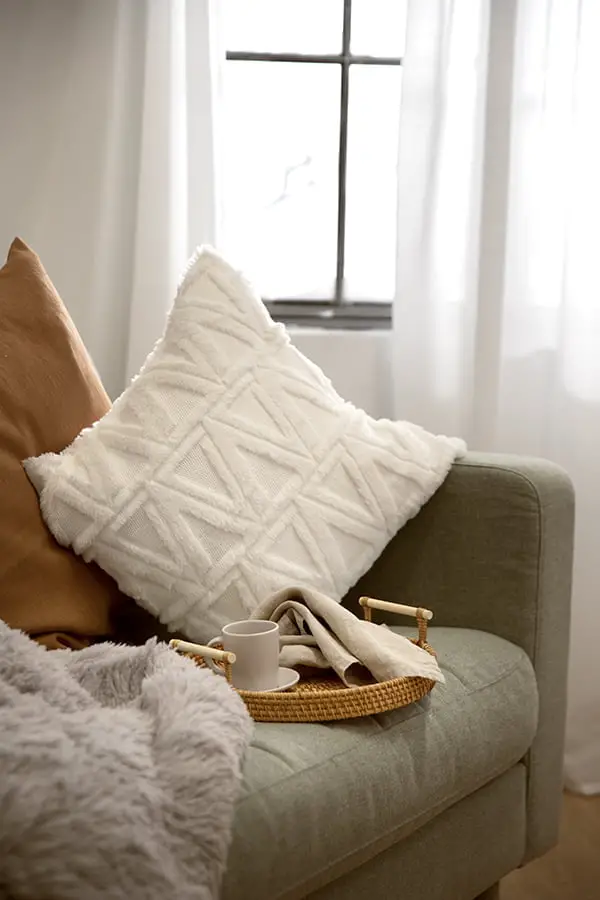
Over time, the cushions on your couch can become compressed in certain areas due to frequent use. By simply rotating and flipping them over, you can distribute the filling more evenly and prevent further deformation.
Try switching up the positions of your cushions every few weeks or so. For example, if you have a three-seater sofa with two large seat cushions and four smaller backrest pillows, swap them around occasionally so that each cushion gets equal wear.
Preventing Cushion Deformation

One of the best ways to do this is by regularly rotating and flipping your cushions. This will distribute the wear and tear more evenly across all sides of each cushion, preventing any one area from becoming too flattened or compressed.
Another way to prevent cushion deformation is by investing in high-quality cushions with durable fillings that can withstand frequent use. Look for materials like foam or down alternative that are known for their resilience and ability to bounce back after being compressed.
Be mindful of how you sit on your couch. Avoid sitting on the same spot every time as this can cause uneven wear patterns over time leading towards deformation.
Replacement of Cushion Fillings

Over time, cushion fillings can become compressed and lose their shape, resulting in uncomfortable seating. Replacing the filling is a simple process that can make a big difference in the comfort of your furniture.
To replace cushion fillings, start by removing all of the old stuffing from inside the cushion cover. You can use scissors or a seam ripper to carefully open up any seams if necessary.
Once you have removed all of the old filling material, measure and cut new foam or batting to fit inside each cushion cover.
When selecting new filling materials for your cushions consider factors such as density and firmness levels that will provide optimal support for sitting on them comfortably without sinking too much into them. Once you have inserted new filler material into each cover ensure they are evenly distributed before closing up any openings with needle and thread or fabric glue.
When to Replace Cushions
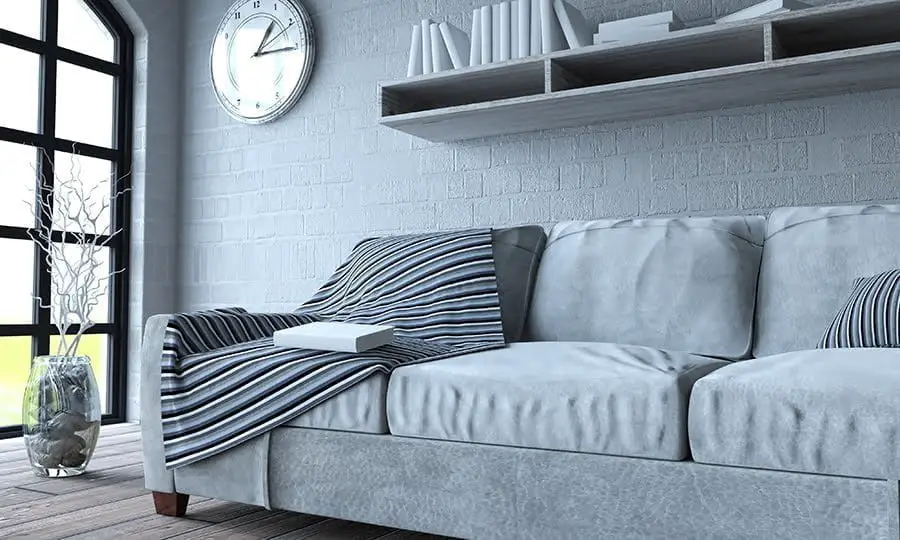
If you notice that your cushions are sagging or have lost their shape despite fluffing attempts, it may be time for a replacement. If the cushion covers are torn or stained beyond repair, it’s best to replace them altogether.
It’s important to note that not all couches require the same type of cushion filling. Some may use foam while others use down feathers or polyester fiberfill.
When replacing your cushions, make sure you choose the right type of filling for your specific couch model.
Replacing old and worn-out cushions can breathe new life into an otherwise tired-looking piece of furniture and improve overall comfort levels in your home.
Choosing the Right Cushions
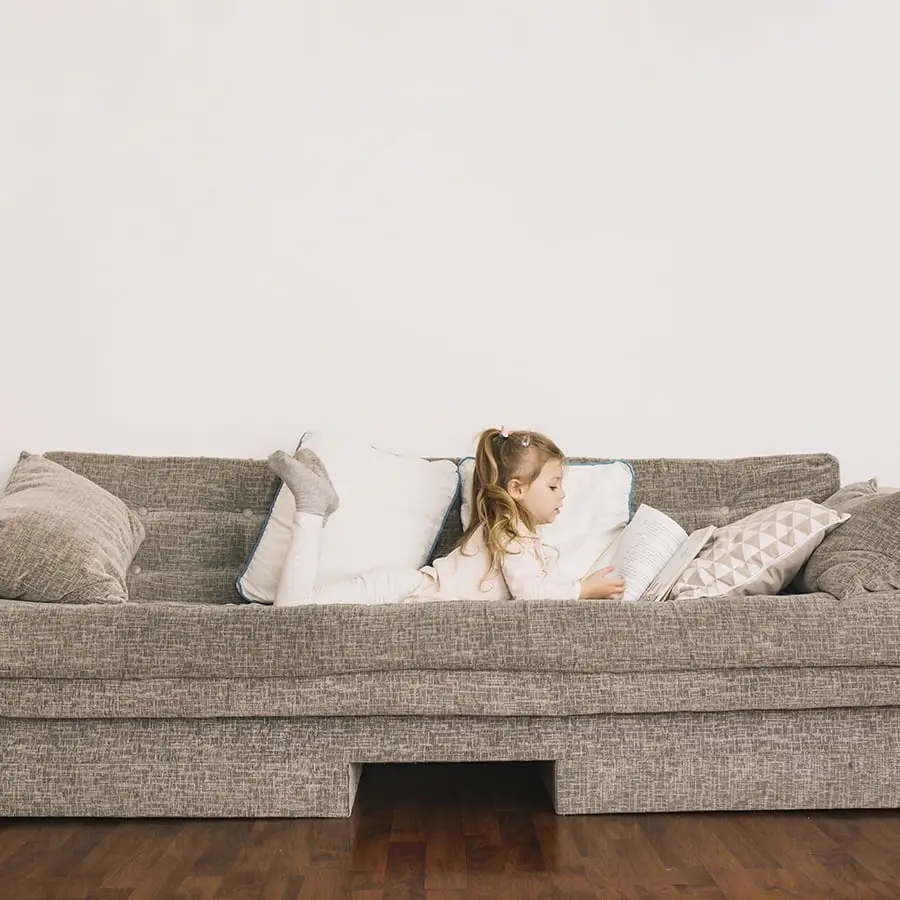
When shopping for new cushions, consider the type of filling used. Foam-filled cushions are durable and provide good support, while down-filled or feather-filled ones offer a softer feel but require more fluffing to maintain their shape.
Another factor to consider is cushion size. Oversized cushions may look cozy but can be difficult to fluff properly, leading to deformation over time.
On the other hand, smaller-sized pillows may not provide enough support.
Lastly, think about color and pattern when choosing your new couch cushions. Neutral colors like beige or gray are versatile options that can match any decor style while bold patterns add personality and interest.
By taking these factors into consideration when selecting your couch’s new pillows you will ensure they remain comfortable with minimal maintenance required in order for them keep looking great!
FAQ
Can you plump up sofa cushions?
Yes, plump up sofa cushions by bouncing the unzipped cushion on a hard surface on all four edges to create more air in the center and allow the feathers to create depth in the seat.
What to do when couch cushions go flat?
When couch cushions go flat, the most effective solution is to rebuild them with new foam and wrap the foam in polyester or Dacron.
How can you maintain the shape of couch cushions over time?
To maintain the shape of couch cushions over time, regularly rotate, fluff, and vacuum them.
Are there any specific techniques for reviving flattened cushions?
To revive flattened cushions, plump and fluff them, occasionally expose them to the sun, and occasionally vacuum the covers to remove dust and dirt.
What types of filling materials can be used to refresh couch cushions?
Types of filling materials that can be used to refresh couch cushions include foam, feather, polyester fiber, and memory foam.




